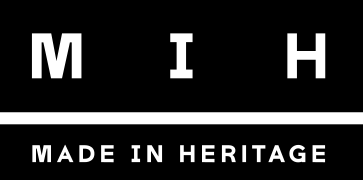For companies looking to transform their company's history into a more accessible and functional corporate asset for communication and sales..
HERITAGE AND BRAND MARKETING
Heritage represents the cultural legacy comprising everything that the past has transmitted to the present, defining the identity of a people, a territory, and especially a company. Every company has its own story, and it is the task of the brand and heritage marketing to make it available, tell it, and enhance it as a tool for promoting the brand or product.
The strong link between Heritage and Marketing is formed by a set of actions that aim to enhance and strategically exploit the company's historical heritage.
BRAND REPUTATION
By reconstructing the company's history through actions involving archival sources, people, and protagonists in general, it becomes possible to discover unpublished content and generate new stories that convey the most authentic corporate values. This process also strengthens the reputation of the company, its people, and its products.
These initiatives benefit not only businesses but also employees, suppliers, partners, customers, and particularly those involved in promotion, communication, institutional relations, marketing, and SEO campaigns.
The ability of companies to convey their identity and culture, highlighting the initiatives that have made them unique and distinguished their brands and products, forms the basis of Heritage marketing. This communication and sales strategy leverages the historical heritage of companies, including:
- retro branding initiatives
- vintage merchandising and packaging
- anniversary celebrations and iconic products
- participation and sponsorship of cultural initiatives
- corporate museums, both physical and virtual
Indeed, heritage is a concept that connects the present, the future, and the past, making the past relevant to contemporary activities and objectives.
Through the historical archive, a company collects and organizes its corporate assets to make them available to the public. The historical archive is useful for promoting the company's image externally by communicating traditions, values, and corporate culture, as well as internally to disseminate its philosophy and mission.
Historical reconstruction is therefore an essential step in ensuring the continuity of a company's presence from its foundation to the present and future.
In this process, it is important to find common roots between the product, the company, and its buyers and customers. Communicating heritage helps to remember and strengthen the relationship of trust between the company and its consumers and stakeholders, leveraging the brand's identity and the values it represents.
Here are two examples of how communication and marketing leverage corporate heritage to promote products and brands:
“"In 1972, OVS opened its doors for the first time. In 2020, it reopens to welcome you back to the stores where Italian style meets Italian families."”
(OVS advertising campaign on the occasion of the post-lockdown reopening of stores in May 2020)
“"The future belongs to those who have a great past."”
(Alfa Romeo Giulietta advertisement on the occasion of its return to the market in 2015)
BRAND IDENTITY AND STORYTELLING
The historical archive is a widely used tool among long-lived companies to promote their image externally by communicating traditions, values, and corporate culture, as well as internally to disseminate their philosophy and mission.
One of the most widespread and powerful tools is storytelling. Through words, images, and sounds, both traditional and digital, a company tells its story, communicates, and strengthens its brand. There are various variations of this practice, and here are a few examples:
Storytelling through products and brands:
This involves researching and selecting products, iconic items, images, packaging, merchandising, and retro branding. These elements aim to emotionally engage customers by evoking feelings and images from the past.
Storytelling through events and relationships:
This includes celebrating anniversaries, organizing exhibitions and fairs, workshops, cultural events, sponsorships, and award ceremonies.
Storytelling through places and spaces:
This encompasses corporate museums, virtual tours, industrial archeology, flagship stores, and historic sites.
So, what are the tools to enhance the historical heritage of a company?
There are multiple and diverse tools. In addition to the ones mentioned above, corporate museums or virtual museums can serve as physical or virtual spaces. Company monographs are often celebratory tools produced for anniversaries or special events, while the revival of iconic and vintage products can be used for the launch of new ones (retro branding).

